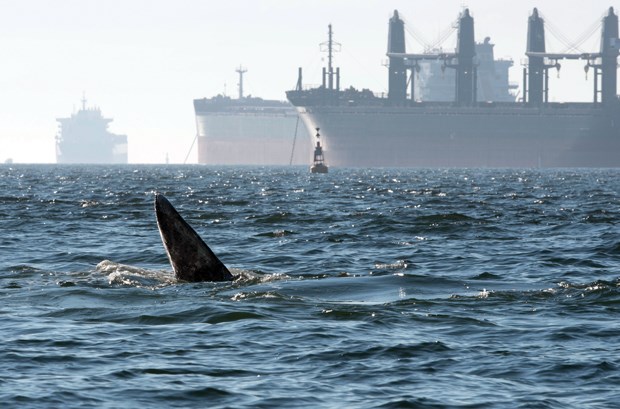The grey whale that’s been feeding near Ambleside Beach and Stanley Park the past few days and inspiring a frenzy of #whalesighting social media posts, is likely the same mammal that captured the city’s affection this summer.
“It does look to be the same individual that was in the area in August,” said Tessa Danelesko, co-ordinator of the B.C. Cetacean Sightings Network, in an email. “It’s tough to say what this means for grey whales as a whole but certainly what we’ve seen is this individual feeding a lot,” she said. “The grey whale population has been pretty stable along the B.C. Coast for the last few years.”
The number of B.C. grey whales had dwindled after extensive hunting during the 19th and 20th centuries, explained Danelesko, but since being protected the population of greys has rebounded to between 18,000 and 24,000.
On Friday Danelesko noted the grey whale had been spotted again near the Inukshuk statue off English Bay. She said grey whales are often seen close to the shoreline because they dine on small marine invertebrates that they filter from sediment or sand on the ocean floor.
“So it’s coming close to shore and scooping up mouthfuls of sediment and filtering that for his prey.”
She said grey whales undertake the longest migration of any mammal in the world each year, travelling between feeding grounds in the Arctic down to breeding lagoons near the Baja in California and Mexico.
The migration south begins soon. “There is a small population that may spend more time around our waters locally throughout the year, but most will go on that migration usually around October or November, (and) start heading down,” she said.



